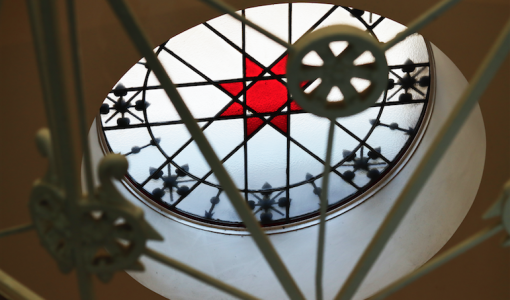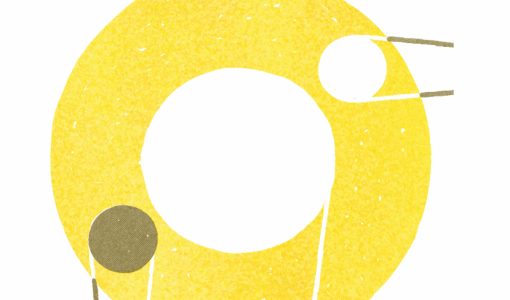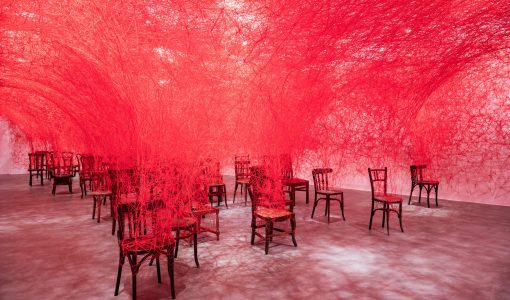
Asger Jorn
Home
›
Exhibitions
›
Asger Jorn
The aim of the exhibition is to provide a complete overview of Jorn’s work and of his contributions in the field of art theory, philosophy, anthropology, economy or the history of ancient Scandinavian art.
A humanist in the broadest sense of the word, Jorn uses all the conventional techniques to express himself: painting, drawing, graphic art, ceramics and sculpture, guided by a determination to reconcile art and life. The exhibition contains approximately 60 paintings, 40 drawings, 70 engravings, 9 bibliophile books and 9 sculptures.
A student of Fernand Léger’s at the Académie Contemporaine in Paris, Asger Jorn was soon seduced by the Surrealist tendency represented by Miró, Ernst and Arp, though he also turned to images from Scandinavian legends to create compositions that range from independent figures to multifaceted landscapes inhabited by animals. His palette of colours shows a debt to Van Gogh, Ensor, Munch and Nolde.
With the artists Appel, Constant, Corneille, Dotremont and Noiret, Jorn founded the group Cobra late in 1948. The principles of the movement are experimentation, transgression of categories and artistic hierarchies, and the disappearance of private interests in favour of group work. Inspiration from popular Scandinavian images and all forms of popular culture in general, from Surrealism, the works of Klee and Picasso and prehistoric art also became a common feature. The group broke up late in 1951.
In December 1953, Jorn created the organisation International Movement for an Imaginist Bauhaus (MIBI) in opposition to the functionalist doctrine of the New Bauhaus in Ulm directed by Max Bill. Jorn aimed to return to the experimental and multidisciplinary character of the first Bauhaus, making industry a means and not an end in itself. Under the aegis of the movement, he carried out a series of investigations in the field of ceramics.
1957 was a decisive year in Jorn’s career, although he went through a period of depression that left a rather acid mark on his work. He combines figures or backgrounds saturated with images or more fluid backgrounds which represent couples locked in embraces, whether in love or hate, and complex compositions that use the satirical or comic imagery he had promoted in his Cobra days. During those years he also began to make collages and décollages, techniques he would return to in later years, 1963-65 and 1967-69.
The contacts between MIBI and Guy Debord’s group, the Lettrist International, led to the creation of the Situationist International (IS) in July 1957. The movement combined avant-garde cultural creation and revolutionary social criticism. The aim was to update Marxism from a new dynamic which included criticism and derision and intervened in all aspects of human activity (sociology, town planning, art, literature, politics). The hard politicisation imposed by Debord caused a number of desertions and expulsions from the movement. Jorn tendered his resignation in April 1961.
After leaving IS, Jorn devoted himself fully to the project of presenting ancient Scandinavian art, which he had begun more than twelve years earlier. He managed to gather an archive of over 25,000 negatives and photographs which he wanted to turn into an ancient Scandinavian art study centre, which he named the Scandinavian Institute of Comparative Vandalism. However, he was forced to abandon the project in 1965.
In the last years of his life, Jorn continued to experiment in the field of painting and graphic art. He also worked with clay, bronze and marble, producing highly mobile sculptures with extremely rich surfaces.
He died of cancer in Arhus, Denmark, in May 1973.
There is a publication to go with the exhibition consisting of texts by Pierre Alechinsky, Troels Andersen, Enrico Baj, Valeriano Bozal, Luciano Caprile, Guy Debord, Pedro G. Romero, Asger Jorn, Antonio Saura and Peter Shield.
Dates
13.02.2002 – 21.04.2002
Curator
Nuria Enguita Mayo.
Artist
Asger Jorn.
Organised by
Fundació Antoni Tàpies, Barcelona in association with Musée d’Art Moderne et Contemporain, Strasbourg.














